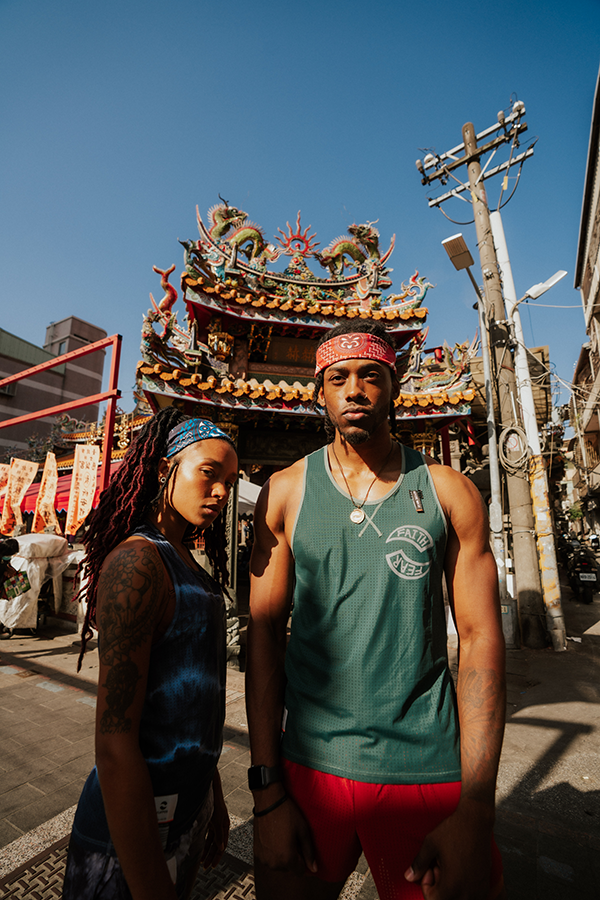No Products in the Cart
With FLIP LIFE flip lettering designed in homage to the great director Stanley Kubrick’s masterpiece “The Shining.” Inspired by the film’s classic scenes to reflect the terror in our hearts: like the carpet with circles of the Overlook Hotel’s corridors; the unnervingly neat orange red of the hotel bar’s restroom; the maze from which there is no escape… these all represent all kinds of fears within us, but only by facing them courageously can we flip our life.
BROWSEThe main Faith and Fear visuals come from hand-drawn designs by FLIPPOS founder Johnny Ku, linking the basic FLIPPOS sustainable logo to the idea of “Faith is the Flip side of Fear” with deep strokes that convey how he has pursued his dreams these past years, flipping life to another level of awareness.
BROWSEFull version of the coin design, uses front and back for the metaphor Faith is the Flip side of Fear. The bright front represents Faith, while the dark back represents Fear. On the Fear side we have specially added a reflective element, for safety at night on a functional level, while on the emotional level it signifies total acceptance; understanding oneself’s darker side is like finding a diamond in the dark – the darker, the brighter.
BROWSEFLIPPIE RUNNER 是Flip Hippie Runner 的縮寫,想傳達「翻轉的嬉皮跑者」是一群不論在任何狀況之下都能夠保持正面、樂觀、勇往直前的人。
立即查看FLIPPIE RUNNER is an abbreviation of “Flip Hippie Runner,” suggesting the kind of people who always stay positive, optimistic and progressive in any situation. The inspiration for the font design is mainly drawn from the Bauhaus school that originated with architect Walter Gropius, who in 1919 founded the Staatliches Bauhaus (National Bauhaus art school) in Germany. In German, “Bau” means building, and “Haus” means house. He sought a new organization of designers for a creative concept that did away with overly ornate architecture in favor of a practical and functional aesthetic. With this utopian ideal, Bauhaus flipped the way the world defined aesthetics, and the school continues to influence architecture, art, industrial design and even fashion until today.
BROWSEThe main Faith and Fear motif is a hand-drawn design by Johnny Ku, linking the basic FLIPPOS sustainable logo to the idea of “Faith is the Flip side of Fear” with deep strokes that convey how he has pursued his dreams these past years, flipping life to another level of awareness. The cap uses a collage of three materials with the same color scheme and is named Trinity, expressing the FLIPPPOS faith worldview: the self, creation, spacetime – the three are one and with faith you can achieve anything.
BROWSE在愛爾蘭的傳說中,凱爾特人視三葉草為聖物,象徵生命力源源不絕。 我們將三葉草的形狀不規則且融合遍佈在襪子上,同時又以四個不一樣的編織方式去代表大英國協的四個國家,顏色靈感來自凱爾特人的綠色,而代表日耳曼人的咖啡色則是黑、紅、黃三色的混和。此產品開發難度極高,就好像不同民族文化需要幾千年的磨合,才能找到現今和睦共處的方法。襪子翻轉後,用對比色的手法與主色系相呼應,意思是指雖然不一定每個種族都能夠認同彼此,但相互尊重、包容才是人類進化成真文明的根本。
立即查看Inspired by the traditional Indian painting, Henna (Mehendi in Hindi). It was spread from Egypt to the Middle East 5,000 years ago, and then spread to India to become a symbol of auspiciousness and blessing, it is also an indispensable role in Indian traditional festivals and weddings. In the early days in India, Henna was used by people of lower caste to serve those with higher status. However, with the changes of the times, Henna has also transformed into a skill that everyone can learn, regardless of age and occupation.
BROWSEInspired by the traditional Indian painting, Henna (Mehendi in Hindi). It was spread from Egypt to the Middle East 5,000 years ago, and then spread to India to become a symbol of auspiciousness and blessing, it is also an indispensable role in Indian traditional festivals and weddings. In the early days in India, Henna was used by people of lower caste to serve those with higher status. However, with the changes of the times, Henna has also transformed into a skill that everyone can learn, regardless of age and occupation.
BROWSERock music originated in the southern United States in the 1940s. The style is an independent music style developed by combining African-American music, such as blues, rhythm and blues, gospel music, country music and jazz, and performed by black musicians. In the early days, people listen to music were through the radio, which allowed the audience to enjoy the music without seeing the skin color of the performers. Back the days racial discrimination was serious problem in United States, rock music made people feel the purity of music.
BROWSEMaori Koru Silver fern is a unique species of fern in New Zealand. The back of the silver-white leaves can glow under the moonlight. When Maori people hunt at night, they will fold the silver fern leaves as a guide to go home. The silver fern is not only regarded as a "sacred object" by the Maori, but also the national flower of New Zealand and the team emblem of the national rugby team All Blacks.
BROWSE沿用經典印地安設計的 Mohicans 翻轉襪,這次主色系採用有印地安人聖物之稱的綠松石色,特別是納瓦霍族認為綠松石是藍天和大海的精靈,是神力的象徵,他們會在身上佩戴綠松石飾物,用來祈求財富和長壽。 另外不同於 Mohicans 的設計是翻轉後的翅膀,取而代之的是象徵二戰美軍的老鷹圖騰,以表達少數民族身在主流社會裡,仍然保留自己的文化傳統,為這個世界做出貢獻。
立即查看Inspired by the traditional Indian painting, Henna (Mehendi in Hindi). It was spread from Egypt to the Middle East 5,000 years ago, and then spread to India to become a symbol of auspiciousness and blessing, it is also an indispensable role in Indian traditional festivals and weddings. In the early days in India, Henna was used by people of lower caste to serve those with higher status. However, with the changes of the times, Henna has also transformed into a skill that everyone can learn, regardless of age and occupation.
BROWSE







![TRINITY RUNNING CAP [SEPTEMBER]](http://www.flippos.cc/cdn/shop/files/20230602_homepage_running-4_respimgsize.jpg?v=1685674229)






